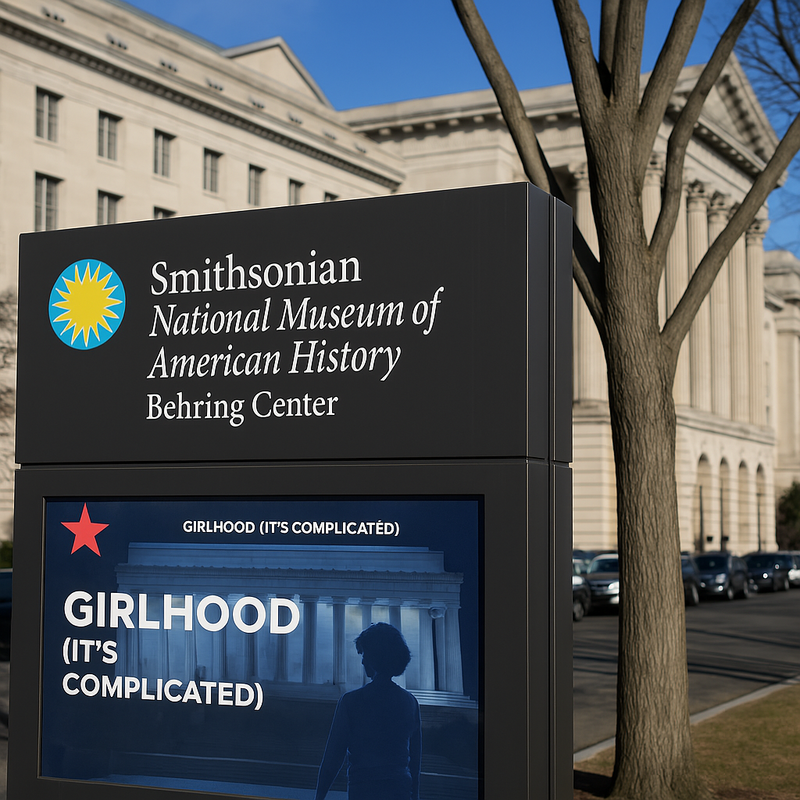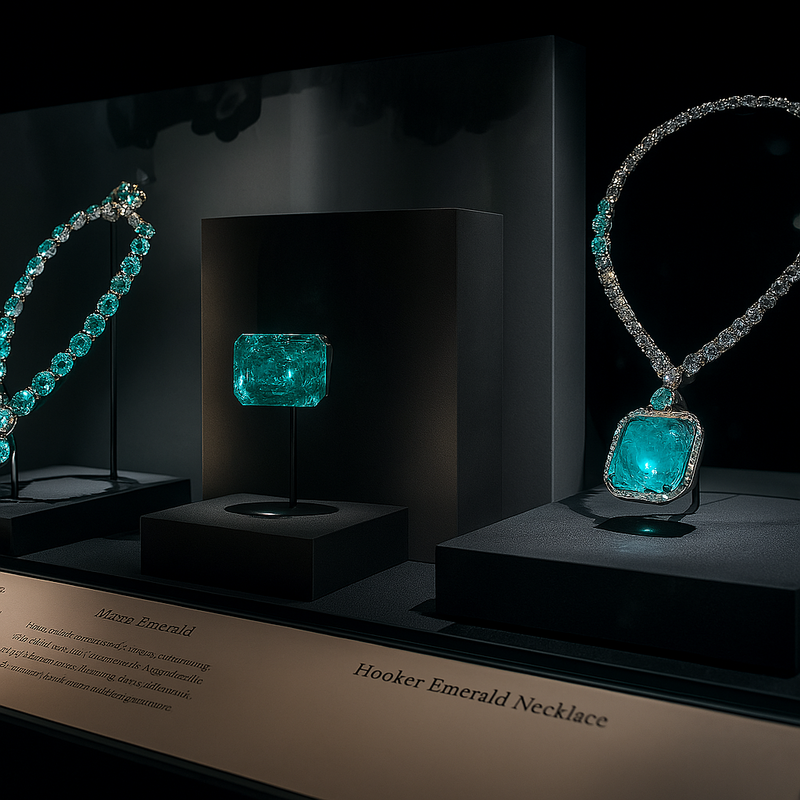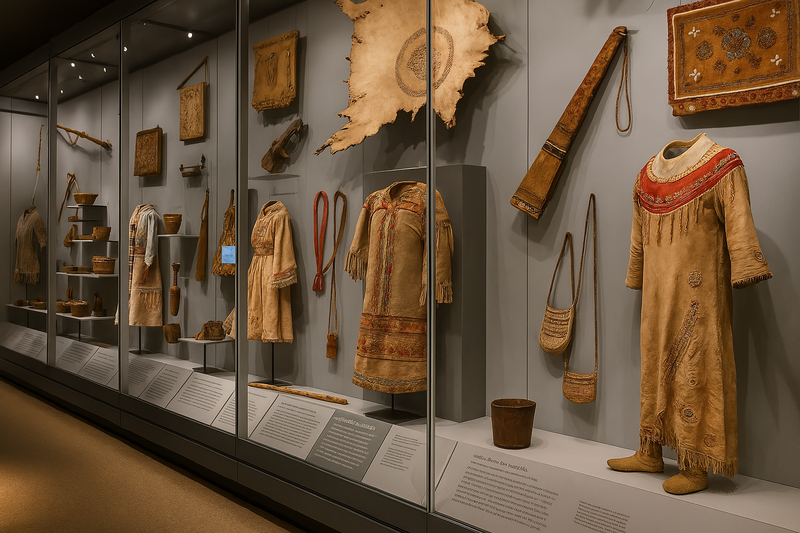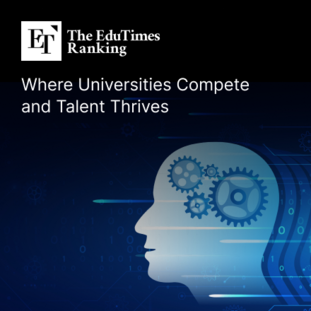Trump vs. the Smithsonian: History, Ideology, and the Battle for America’s Museums
Input
Modified
Trump’s Vision for American History The Smithsonian’s Reckoning with a Complicated Past DEI Under Fire: Are Inclusion Programs a Threat to National Unity?

Trump’s Vision for American History
In recent days, former President Donald Trump issued a sweeping executive order aimed at addressing what he perceives as an ideological shift in American institutions. One of the primary targets of this order is the Smithsonian Institution, which, according to Trump, has been propagating "improper" or "anti-American" ideologies through its programs and exhibits. But how did the Smithsonian, an institution known for its rich historical and scientific collections, come to be accused of promoting such controversial ideas? More importantly, what does this executive order mean for the future of American museums, educational institutions, and the broader debate about history and ideology in America?
For many, the Smithsonian is simply a museum, a place of culture and education that showcases the country's history, art, and scientific achievements. Yet, the political and cultural climate in the U.S. has led to growing concern over how historical narratives are being shaped. Trump’s executive order focuses on programs and exhibits that he claims represent an ideological shift that does not reflect the values of mainstream America. The order calls for the elimination of these programs, particularly those that promote ideas deemed to be in conflict with American ideals. But is there merit to these concerns, or is this a politically motivated move?
Trump's executive order, titled "Restoring Truth and Sanity to American History," was introduced with a letter from the White House detailing the administration’s goals. The order asserts that certain ideologies being promoted by the Smithsonian and other cultural institutions are eroding the nation’s foundational values and distorting history.
In the letter, Trump calls out the "anti-American" views that he claims have infiltrated the Smithsonian, citing the growing influence of certain progressive ideas within the institution. These include an overemphasis on the darker parts of American history, such as slavery and colonialism, and a rise in political correctness in the museum’s exhibits. For Trump, the portrayal of American history should focus on the nation’s strengths—its democratic values, the pursuit of freedom, and the success of the American experiment. He contends that the Smithsonian, in recent years, has fallen victim to an ideological agenda that downplays these aspects in favor of narratives that he believes undermine American pride.
The letter underscores the idea that the Smithsonian, which holds a position of cultural and educational authority, must be a reflection of the American ideal. Trump’s stance is clear: the institution’s role should be to celebrate America’s greatness, not to dwell excessively on its faults or to present an overly critical view of its history. The White House argues that such a shift is needed to ensure that future generations of Americans learn to appreciate the country’s positive contributions to the world rather than focusing on past wrongs.

The Smithsonian’s Reckoning with a Complicated Past
Looking deeper into the programs and initiatives that Trump and his administration have flagged, we see a complex portrait of a nation grappling with its past and present. The Smithsonian, as a collection of museums and research institutions, has long been a place for public education and historical reflection. However, recent initiatives and exhibits have drawn the ire of some political figures and groups, who see them as evidence of the Smithsonian’s ideological drift.
One key example is the Smithsonian’s handling of issues related to race, diversity, and inclusion. The institution has focused on presenting exhibitions that address the historical legacy of slavery, segregation, and the ongoing struggles of marginalized groups in America. Some of these exhibits, like the National Museum of African American History and Culture, delve into uncomfortable truths about the nation’s history, which has led critics to accuse the museum of engaging in what Trump refers to as the promotion of "anti-American" ideologies. In this light, Trump’s executive order seeks to dismantle the museum’s diversity, equity, and inclusion (DEI) programs, accusing them of fostering divisiveness and presenting an overly negative view of the nation’s history.
Despite this criticism, there is a valid counterpoint. The Smithsonian, as an institution, has always been rooted in the principle of free speech and the dissemination of knowledge. Museums and cultural institutions worldwide have historically played crucial roles in addressing uncomfortable truths and challenging societal norms. In this context, the Smithsonian’s efforts to highlight aspects of American history that many would prefer to ignore—such as the atrocities of slavery, the treatment of Native Americans, and the struggles for civil rights—can be seen as part of a broader commitment to providing a nuanced understanding of the past. These efforts are not necessarily an attempt to tear down the country’s ideals, but to reflect the full scope of its history.
While one might agree that history should be presented in a way that acknowledges America’s accomplishments, it is equally important to engage with the country’s faults. Trump's call for the elimination of programs addressing these darker elements of American history raises questions about what it means to truly understand and learn from the past. It’s a delicate balance between highlighting achievements and acknowledging the need for growth and reconciliation. The Smithsonian’s role in fostering this kind of comprehensive understanding is one of its most important contributions to public education, and it is difficult to simply erase or diminish these discussions without undermining the integrity of the institution.

DEI Under Fire: Are Inclusion Programs a Threat to National Unity?
DEI initiatives have become increasingly popular in educational and cultural institutions in recent years, aiming to foster an inclusive environment for people of all backgrounds. These programs often include training on unconscious bias, promoting diverse hiring practices, and creating exhibits that reflect a broad spectrum of experiences. Trump argues that these programs are counterproductive and divisive, accusing them of undermining national unity and pushing a progressive agenda that clashes with American values.
Trump's opposition to DEI programs is based on the belief that they create divisions within society, focusing on race, gender, and identity politics in a way that distracts from what he considers the true American spirit. He suggests that by emphasizing differences between groups, these programs undermine the concept of a united American identity. Instead of focusing on what makes Americans different, Trump advocates for a vision that celebrates shared values such as hard work, individual freedom, and patriotism.
Critics of DEI initiatives, like Trump, argue that these programs often prioritize identity politics over merit and achievement, creating divisions rather than promoting unity. They contend that the focus on race and gender can lead to a victim mentality and undermine the concept of equal opportunity for all. However, supporters of DEI programs counter that such initiatives are necessary to address the systemic inequities that persist in American society, particularly in institutions like the Smithsonian, which holds significant influence in shaping public perceptions of history and culture.
Is it really possible to reconcile Trump’s vision of a united America with the work being done in museums like the Smithsonian? While his call for unity is understandable, it’s important to recognize that true unity doesn’t mean ignoring differences or sanitizing history. Instead, it means confronting challenges together and striving for a more inclusive society. DEI initiatives are a step in this direction, helping institutions like the Smithsonian to better reflect the diverse experiences of Americans.
Trump’s executive order on the Smithsonian has raised important questions about the intersection of history, ideology, and national identity in America. While it’s easy to dismiss his concerns as politically motivated or overly simplistic, there is a broader conversation to be had about the role of cultural institutions in shaping public discourse. The Smithsonian, like other museums, must balance its responsibility to provide accurate historical education with the desire to promote unity and celebrate America’s ideals.
Ultimately, the debate isn’t just about the Smithsonian—it’s about what kind of history Americans want to remember and how that history should be communicated. Should we focus solely on the triumphs of the nation, or should we confront its flaws as well? Should museums be places of critical reflection, or should they simply reinforce the narrative of national pride? These are questions that deserve thoughtful discussion and should guide the future of cultural institutions like the Smithsonian.
In the end, the executive order highlights the growing divide in American politics over how to interpret and teach history. The Smithsonian, as an institution of learning, will likely continue to be at the center of this debate. Whether or not Trump’s vision prevails, the conversation about how we understand and present our past will undoubtedly shape the future of American culture for years to come.





















